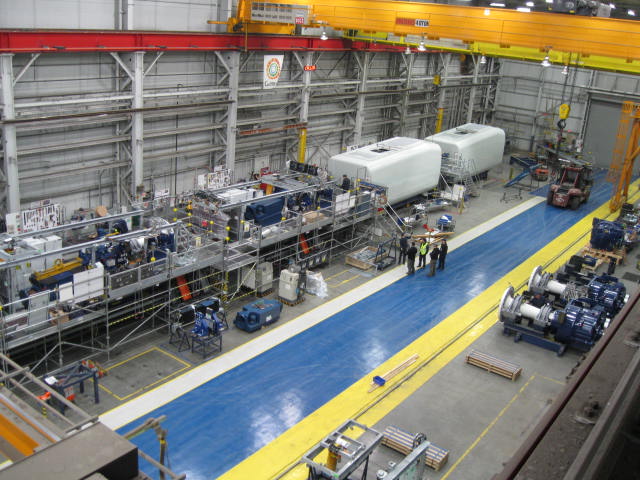This section of the Renewable Energy Handbook is provided by Gamesa Corp.
Manufacturing today’s wind turbine can involve millions of dollars and hundreds of people. To better understand what comes from the years of research and development to the final days of production, let’s tour a modern turbine production facility.
The nacelle is the part of the turbine that houses the components that transform the wind’s kinetic energy into mechanical energy to turn a generator that produces electricity. The nacelle may look impressive from a distance, installed on top of its tall steel or concrete tower, but get closer and you see that utility-scale machines are truly massive. Their nacelles can stretch to over 50-ft long, and weigh up to 300 tons and more depending on the manufacturer and power rating.
Most nacelles have common components, such as a hub, rotor, gearbox, generator, inverters, hydraulics, and bearings. More than 1,500 small and large components and subsystems are housed in the nacelle and they are rarely obtained off-the-shelf. Before a nacelle goes into serial production, it must undergo a stringent product development cycle. The OEM will capture all system, subsystem, and component requirements (functional, aesthetic, and normative) and design to meet these requirements during product development. Parts and components are designed, prototyped, tested, validated, and certified, when necessary, at an appropriate level. The result is a unique turbine model differentiated from others in the market.
Once a part is specified, the OEM turns to its supply chain to identify a vendor. The OEM and supplier collaborate to produce the part in accordance with specifications.
For the most part, assembly relies on conventional manufacturing processes. Some OEM’s use individual work stations or cells to complete the various stages of assembly. Others have adopted lean manufacturing techniques that use automotive-style moving assembly lines.
In that final assembly, the hub attaches to the front of the nacelle and houses the pitch system which consists of cylinders, bearings, and actuators. This system feathers the blades to maximize wind capture. It also does the opposite – it pitches the blades out of the wind to aerodynamically stop the turbine.
The most important inner workings of the turbine’s nacelle sit behind the hub. This equipment includes the yaw system, main-shaft bearing, gearbox, generator, and electrical control cabinet. These components are mounted on the structural frame of the nacelle. The frame is made of two main parts. The front or main frame of the nacelle is generally made of cast steel and holds the yaw system, gearbox, and main shaft. The generator, transformer, and electrical cabinets are secured to a rear frame constructed of formed and welded steel. Once the yaw system passes its rotational test and its motors are installed and pass their functional tests, the two halves of the frame are joined by heavy bolts and spring pins. The entire assembly is attached by brackets to the bottom half of the nacelle’s fiberglass cover or ‘gondola’.
Then the main shaft and gearbox unit along with the generator assembly are lifted into the nacelle using a gantry crane and bracketed to the gondola. Several OEM’s install the transformer inside the nacelle at this point, but most install the transformer at the base of the tower.
With everything in place, the nacelle is given a comprehensive final verification check. With the nacelle verification test complete, technicians assemble the fiberglass upper housing and install it to cover and protect components inside. Quality Control then gives the nacelle a final check. Finished nacelles are then moved out of the factory and shipped by truck or rail to the wind farm to be lifted onto a tower.
Filed Under: Featured, News





